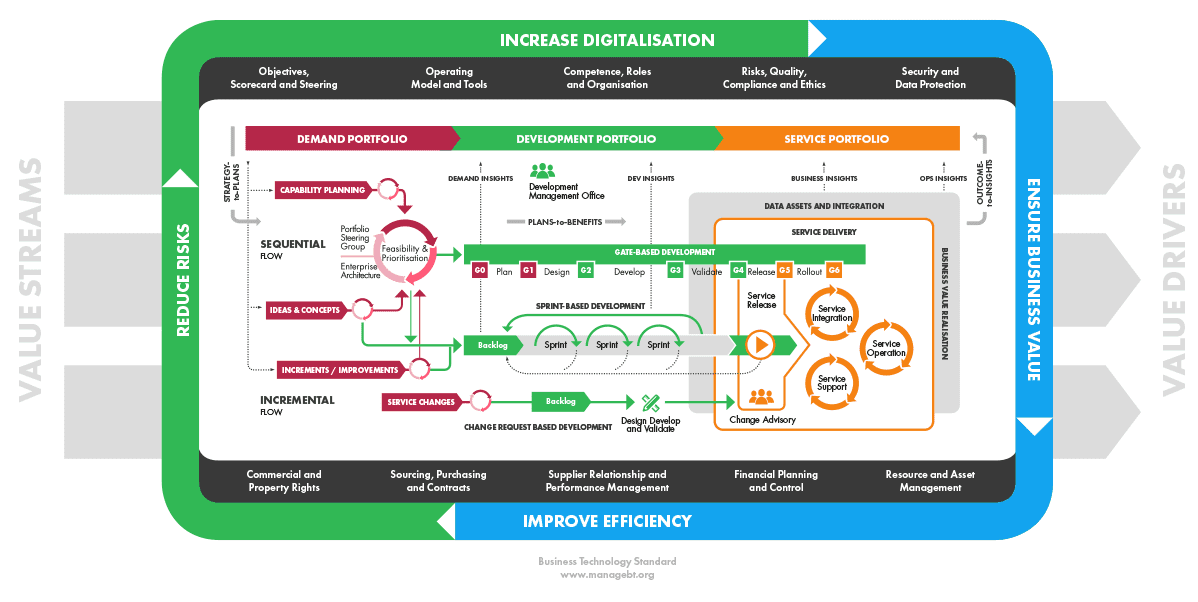Business value realisation is about achieving and demonstrating the actual business value resulting from a deployment of a new or improved product, solution or service. Projects and programmes that implement new capabilities often involve significant organisation changes, requiring a shift of mindset and significant investments by the organisation.
A key success factor of these transformations is the ability to measure the adoption of the new capabilities, products or solutions by the organisation and its customers. A poor adoption will result in the benefits and value not being realised. The business value realisation process therefore aims at measuring and maximising adoption and success of business transformation over time.
Figure 5.5.1 Business value realisation process
The business value realisation process relies on early stage work relating to the creation of a business benefits plan linked to the requested business case:
There are four types of tasks associated with the business value realisation process:
For sequential developments, some of the business benefits may be achieved before the rollout happens, for example in the pilot, although in most cases they materialise after the rollout.
For incremental developments however, the business value realisation must be measured from the first increment.
Figure 5.5.2 Sequential and incremental business value realisation
The business value realisation process runs for a period set within the business case. At the end of the period, an assessment has to be made as to whether the transformation is successful, has reached some success and must improve, or is a failure.
In the case of a failure, where the business benefits are not realised as expected or realised too slowly, a root cause analysis should be conducted to support decision making on initiating possible corrective actions. The most common causes of failure include the following reasons:
If the initiative is only partially successful, improvement requests can be raised and fed back into the demand process.
If the business benefits are realised as expected, it is good practice to communicate this success to all relevant stakeholders.
It is also good practice for the benefits to be continually managed and assessed throughout the whole investment lifecycle, which includes incremental updates and amendments to any product or service.
